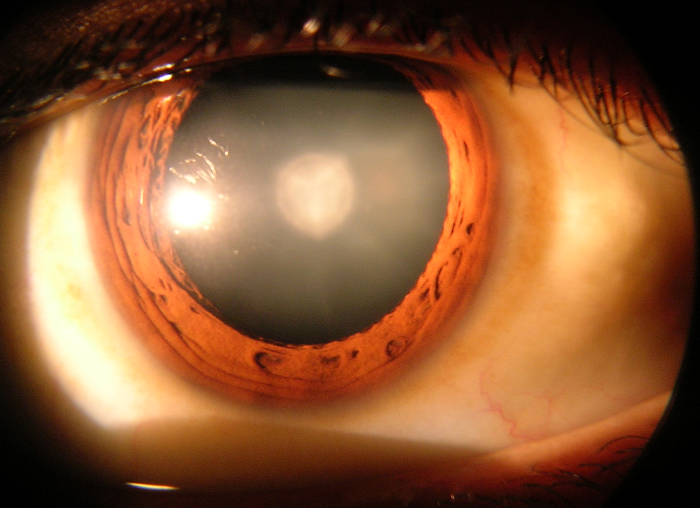What Is Cataract Surgery? Do You Need It?

According to the American Academy of Ophthalmology (AAO), a cataract is when your eye's natural lens becomes cloudy. Proteins in the normally clear lens of your eye break down and cause things to look blurry, hazy or less colorful.
For people who have cataracts, seeing through cloudy lenses is described as similar to looking through a frosty or fogged-up window.
Aging is the most common cause of cataracts due to normal eye changes that happen starting around age 40. These cataract changes are very common as you age, affecting more than 30% of those over 65 and more than 70% of those over 85.
Fortunately, cataract can be treated. The best way to treat and get rid of cataracts is surgery. Cataract surgery is a straightforward procedure to remove the cloudy lens of the eye and, in most cases, replace it with a clear artificial lens.
Each year, thousands of people successfully undergo cataract surgery. The procedure usually takes 30 to 45 minutes, and you should be able to go home on the same day.
If you think you are suffering from cataracts, it's important to make an appointment with a specialized ophthalmologist. A specialist can diagnose and perform cataract surgery to restore clear vision.
The safety and effectiveness of cataract surgery are well established. About 90% of eyes achieve a visual acuity of 6/12 or better after cataract surgery, meaning they see detail from 6 meters (20 ft) away the same as a person with "normal" eyesight would see it from 12 meters (39 ft) away.
In eyes with no pre-existing conditions, more than 95% can expected to achieve this outcome of a visual acuity of 6/12.

Cataract in Human Eye: Photo: Rakesh Ahuja, MD / Wikipedia.
How Cataract Surgery Works
This procedure involves a small incision in the cornea's edge and then using an ultrasound technique to remove the cloudy lens.
Next, the surgeon will replace the lens with a transparent and clear artificial lens.
The cataract extraction mainly includes two parts:
- Removing the cataract (cloudy lens)
- Implanting the intraocular lens
Modern ophthalmologists combine the most advanced surgical equipment and complex cataract surgery techniques for the best results.
The steps involved in current extracapsular cataract extraction and intraocular lens implantation are:
- The size of the surgical incision measured at about 8-10 mm
- Pulling out the turbid crystal nucleus and aspirate the crystal cortex
- Implanting rigid PMMA intraocular lens
- Suturing the surgical incision
A successful cataract operation by a highly experienced doctor may even take approximately fifteen minutes. One doctor may have done cataract surgery hundreds or thousands of times.
Benefits of Cataract Surgery
Cataract surgery seldom results in complications and is not painful in any way.
But, in the rare case of a serious complication (estimated at around 1 in 50 cases) like a detached retina or some loss of vision, most complications can be treated with medicines or further surgery.
The most common risk after surgery is infection, which can be avoided by keeping away from hot tubs and swimming for at least a month until your eye heals.
After the surgery, you may be given antibiotics and eye drops to aid in the healing of your eyes. The incision itself heals on its own without any stitches.
The procedure and equipment used in the process have advanced significantly in recent years, including newer laser-assisted surgery that adds an extra layer of safety and precision.
Best of all, most cataract patients attain good vision through this safe and effective surgical method. It has a very high success rate in improving your eyesight.
Precautions to Take Before and After Surgery
It's important to take precautions before and after cataract surgery to avoid complications:
- Rest as much as possible on the day of the operation; avoid bowing your head and coughing.
- You don't need to avoid food after the operation. Everything in your daily life is normal, but don't smoke or drink. People with dry stools should take intestinal moisturizers, avoid excessive exertion, and lifting heavy objects.
- Per your doctor's advice, come to the hospital for review the next day after the operation and one week after discharge and confirm the medication situation at home and the subsequent follow-up date.
- After changing the dressing (discharge), go home and use anti-inflammatory eye drops. Some patients use mydriatic drugs to dilate their pupils every night. Usually, three times is sufficient when the pupils are dilated, with an interval of 5 minutes between each two.
So, Do You Require Cataract Surgery?
If you have cataract, you can choose to put off having surgery for a while and have regular check-ups to monitor the situation. However, there are no medicines or eye drops that have been proven to improve cataracts or stop them getting worse.
If you decide to get surgery to remove a cataract, your optician can write a referral to an ophthalmologist who can then make a diagnosis. Waiting times for cataract surgery vary depending on the location you live.
There are also new types of multifocal contact lenses that are designed to give the patient more or less normal vision immediately after the procedure. Enquire about those too.




















